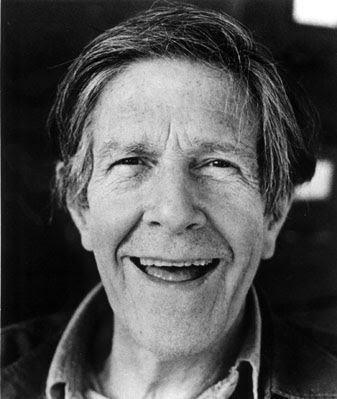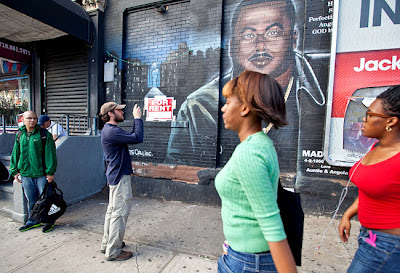The author Merlin Coverley recently sent me a copy of his new book The Art of Wandering. It’s subtitled “The Writer as Walker,” which might suggest a book of infinite length, but in fact he brings it in at a trim and attractive 250 pages.
In it, he speaks well of me and my writing, for which I’m very grateful. But more than that, I think it’s a good book because it covers all the bases but still has room to include various texts and authors that are unfamiliar, and in some cases completely new, to me. And this is exactly what you want from a book of this kind: an incentive to run out and buy some new books to further expand the “pedestrianism” section of your library. Zymunt Bauman’s “Desert Spectacular” in The Flâneur edited by Keith Tester, for example, sounds like it was written with me in mind, though in fact the going rate on Amazon for a hard cover copy is currently $343.93.
Equally you want a book like this to send you back to rereading things you already know, and in this case I’ve found myself pulling out Poe’s “The Man of The Crowd” which is actually one of those shape-shifting stories that seems to be different every time I read it.
Coverley is hardly the first to have stressed the importance of this story in the history of modern, and indeed post-modern fiction, and in the literature of pedestrianism per se. Baudelaire and Benjamin were big fans. Benjamin Benjamin wrote that the story, “is something like the X-ray picture of a detective story. In it, the drapery represented by crime has disappeared. The mere armature has remained: the pursuer, the crowd, and an unknown man who arranges his walk through London in such a way that he always remains in the middle of the crowd.”
Well, yes and no. In Poe’s story, the unnamed narrator sits in the window of a London coffee house watching the world go by. He’s recovering from an illness and finds the spectacle both fascinating and alarming, and is finally struck by a single devilish face belonging to an old man whom he feels compelled to follow. The pursuit continues for the next 24 hours as the old man walks through London, apparently with purpose, though that purpose becomes increasingly indiscernible.

It’s a walk on the wild side: “wooden tenements were seen tottering to their fall … horrible filth festered in the dammed-up gutters … large bands of the most abandoned of a London populace were seen reeling to and fro.” None of this will seem at all unfamiliar to anyone who visits contemporary London. The old man has a “wild energy,” and doesn’t slow down. And neither does the sickly narrator, at least not until as the “shades of the second evening are coming on” he’s finally had enough and gives up the pursuit. Our narrator concludes, “this old man is the type and the genius of deep crime. He refuses to be alone. He is the man of the crowd ... I shall learn no more of him, nor of his deeds.”
For me, it’s one of those stories that keeps slipping in and out of focus. Sometimes it seems sublimely prescient of most modern literature (think Thomas Pynchon passim), a mystery that refuses to give up its mystery, that refuses even to state what the mystery is, asserting that attempts to make sense of a character, or the world itself, is ultimately futile. I know there are many supporters for this view of “The Man Of The Crowd.”
Other times I wonder if Poe didn’t simply paint himself into a corner, realized he couldn’t resolve this story, couldn’t find a “solution” that would be equal to the quest, and so inverted and subverted the narrative: now the mystery is too profound to be understood, or perhaps there is no mystery at all. And there’s at least some suggestion that the narrator never actually leaves the coffeehouse and that the narrative takes place entirely in is his fevered imagination.
Either way, to decide that the old man is “a man of the crowd who can never be alone,” doesn’t really seem to be saying very much, whereas to describe him as “the genius of crime” just seems like character assassination. How could you possibly come to such a conclusion when you’ve followed the old geezer for 24 hours and he’s never, so to speak, put a foot wrong.
You could, of course, give Poe the absolute benefit of the doubt and say that this kind of ambiguity, this oscillation between the genuinely and the bogusly mysterious is precisely what he intended. But was he really that kind of writer?
Finally, Poe holds a special place in the annals of aimless pedestrianism, because of the way he died. On September 27, 1849, he set off from Richmond, Virginia heading, via Baltimore, for his home in New York: the trip was to raise funds for his magazine The Stylus. He evidently made it to Baltimore, though whether directly we can’t be sure (he may have visited Philadelphia): but in any case what happened to him once he got there is certainly a mystery, and at this point in history an apparently unsolvable one.
We do know however than on October 3 he was found in a very bad way, delirious, walking the streets of Baltimore, wearing cheap clothes that were not his own: eventually pitching up outside, then inside, Ryan's Tavern, sometimes known as Gunner's Hall. Some reports have him sober, others have him in a state of drunken collapse.
He was taken to the Washington College Hospital, and died there on October 7, never having recovered sufficiently to give an account of himself. Death certificates were not required at that time and place, and the local newspaper The Baltimore Clipper, reported that his death was caused by “congestion of the brain” which may, or may not, have been a euphemism for alcoholic poisoning. A recent theory suggests Poe actually died of rabies.
.jpg)
Of course, these days everybody “knows” that Poe was a debauched wreck, an authorial image in keeping with his work (though he cleaned up nice for his stamp), but most of this comes from an obituary printed in the New York Tribune, attributed to one “Ludwig,” actually Rufus Wilmot Griswold, once Poe’s friend, then his rival in love and letters, and eventually his posthumous enemy, as well as his posthumous literary executor, N.B. Among other charges he laid against Poe, was that Poe often walked the streets, either in "madness or melancholy", mumbling and cursing to himself: to which any self-respecting flâneur, or even man of the crowd, would surely respond, “Well who the hell hasn’t?”
H.P. Lovecraft wrote a pretty dreadful poem titled “Where Once Poe Walked.” It starts:
Eternal brood the shadows on this ground,
Dreaming of centuries that have gone before;
Great elms rise solemnly by slab and mound,
Arched high above a hidden world of yore.
Nuff said, surely.
However, I am rather taken with the above print “Poe Walking High Bridge” by B. J. Rosenmeyer, ca. 1930. Courtesy of the Print Collection, The New York Public Library,
Astor, Lenox and Tilden Foundations.
And incidentally I discover that there’s a bust of Poe above a winebar, the Fox Reformed in Stoke Newington Church Street, the former site of a school Poe attended. I think I’ll have a walk over there when I’m in London, next month. The art of wandering has not been lost.


























.jpg)






